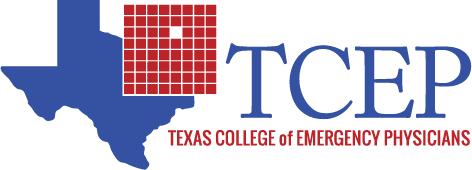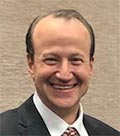Legal UpdateFebruary 2021
FDA PLACES ADDITIONAL BURDENS AND LIABILITY ON OPIOID PRESCIRBERSOn July 23, 2020 the FDA issued the following notice on their website: "FDA recommends health care professionals discuss naloxone with all patients when prescribing opioid pain relievers or medicines to treat opioid use disorder." The guidelines were prompted by the 450,000 opioid overdose deaths from 1999 to 2018, including nearly 47,000 deaths in 2018 alone. While seemingly a benign request on its face, a deeper dive into the “guidelines” lays the foundation for significant liability and time burdens on already taxed health care professionals. The FDA has made the following recommendation for all patients who are prescribed opioid pain relievers: Health care professionals should discuss the availability of naloxone, and consider prescribing it to patients who are at increased risk of opioid overdose, such as patients who are also using benzodiazepines or other medicines that depress the central nervous system (CNS), who have a history of opioid use disorder (OUD), or who have experienced a previous opioid overdose. Health care professionals should also consider prescribing naloxone if the patient has household members, including children, or other close contacts at risk for accidental ingestion or opioid overdose. COMMENTARY: Should we also prescribe flumazenil or calcium gluconate because there are benzodiazepines and calcium channel blockers in the home? Think of all the other medicines we prescribe that can also depress the CNS (i.e. clonidine, Benadryl, Flexeril) Where does this slippery-slope recommendation end? The FDA has made the following recommendation for all patients who are prescribed medicines to treat OUD: Health care professionals should discuss the availability of naloxone and strongly consider prescribing it. For methadone and buprenorphine-containing products, health care professionals should also consider prescribing naloxone if the patient has household members, including children, or other close contacts at risk for accidental ingestion or opioid overdose. COMMENTARY: See commentary above. The FDA has made the following recommendation for other patients at increased risk of opioid overdose: Health care professionals should consider prescribing naloxone, even if the patient is not receiving a prescription for an opioid pain reliever or medicine to treat OUD. This may include people with a current or past diagnosis of OUD or who have experienced a previous opioid overdose. COMMENTARY: Now, essentially every patient will need to be screened for prior overdose or OUD and the need for a naloxone prescription, even if they are in the ED for a UTI. Will we now be required to access another database to see if a patient has a history of opioid overdose/OUD or rely on the patient to divulge this sensitive information? What kind of liability will providers have if they don’t prescribe naloxone? What kind of liability will providers have if one of the children at home has a cardiac arrest, a seizure, or permanent encephalopathy because they accidentally ingested the naloxone meant to treat the accidental overdose of opioids that may or may not be in the home anymore? Naloxone is an FDA-approved medicine used to treat an opioid emergency such as an overdose or possible overdose. There are three FDA-approved forms of naloxone: a nasal spray, an injectable, and an auto-injector. All forms of naloxone can be provided by community-based distribution programs and used by individuals with or without medical training to stop or reverse the effects of an opioid overdose. Naloxone is sold under the brand names Narcan and Evzio, and also as generics. Patients may obtain naloxone by a prescription from a health care professional, without a prescription directly from a pharmacist, or as part of a community-based program. Check with your local state laws to determine if naloxone may be obtained without a prescription. COMMENTARY: The FDA has placed health care providers in a true catch-22. If we don’t prescribe or recommend naloxone to essentially everyone, we could be placed in a position of civil and possible criminal liability for the injury/death of anyone prescribed an opioid prescription, who has had an issue with opioids in the past, or anyone living with one of the above patients. If we do prescribe or recommend naloxone for the home, even for those without a current opioid in the home or a current opioid issue, we could be liable for one of the many awful side-effects that naloxone can impose on the unwary child that it was meant to protect. Until these recommendations gets sorted out by the FDA or the plaintiff’s bar, it may be helpful to add some verbiage to your discharge instructions to address this issue since there are so many people who are impacted by opioids. Reference: Hedegaard H, Miniño AM, Warner M. Drug Overdose Deaths in the United States, 1999–2018. NCHS Data Brief, no 356. Hyattsville, MD: National Center for Health Statistics; 2020. Available at: https://www.cdc.gov/nchs/data/databriefs/db356-h.pdf. Kenneth Alan Totz, DO, JD, FACEP No information within this publication should be construed as medical or legal advice. Independent medical and/or legal advice should be sought based on each individual’s particular circumstances. |

